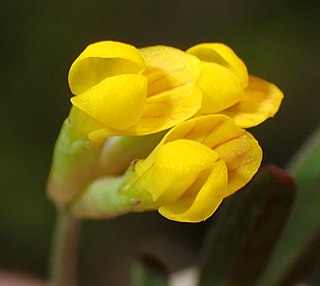
Royal Botanic Gardens, Kew is a non-departmental public body in the United Kingdom sponsored by the Department for Environment, Food and Rural Affairs. An internationally important botanical research and education institution, it employs 1,100 staff. Its board of trustees is chaired by Dame Amelia Fawcett.

Cyperus is a large genus of about 700 species of sedges, distributed throughout all continents in both tropical and temperate regions.
Pehr Löfling was a Swedish botanist and an apostle of Carl Linnaeus.

Cyperus difformis is a species of sedge known by several common names, including variable flatsedge, smallflower umbrella-sedge and rice sedge. This plant is native to southern Europe, most of Africa and Asia, and Australia, and it is naturalized in other areas of the world, including large parts of the Americas.

Cyperus squarrosus is a species of sedge known by several common names, including bearded flatsedge and awned flatsedge. It is found in wet environments in North and South America, Africa, Australia, southern Asia and Italy.

Cyperus iria is a smooth, tufted sedge found worldwide. The roots are yellowish-red and fibrous. The plant often grows in rice paddies, where it is considered to be a weed.

Schoenoplectiella mucronata is a species of flowering plant in the sedge family known by the common names bog bulrush, rough-seed bulrush, and ricefield bulrush. It is native to Eurasia, Africa and Australia. It grows in moist and wet terrestrial habitat, and in shallow water. It is a perennial herb growing from a short, hard rhizome. The erect, three-angled stems grow in dense clumps and can reach a metre tall. The leaves take the form of sheaths wrapped around the base of stem, but they generally do not have blades. The inflorescence is a headlike cluster of cone-shaped spikelets accompanied by an angled, stiff bract which may look like a continuation of the stem.
Cyperus centralis is a sedge of the family Cyperaceae that is native to arid areas of central Australia.
Cyperus crispulus is a sedge of the family Cyperaceae that is native to Australia and found in Western Australia, and the Northern Territory.
Cyperus latzii is a sedge of the family Cyperaceae that is native to Australia, and found in the Northern Territory and Western Australia.
Cyperus nutans is a sedge of the family Cyperaceae that is native to Australia, China, India, Bangladesh, south-east Asia, Malaysia, India, and Indonesia.

Hypericum virginicum, the marsh St. Johns-wort or Virginia marsh St. Johnswort, is a species of flowering plant in the family Hypericaceae. It is native to the central and eastern United States and eastern Canada.

Cyperus sanguinolentus, the purple-glume flat sedge, is an erect sedge, solitary or tufted, growing from 5 to 80 cm tall. A widespread species, naturally found in many parts of Africa, India, Asia and Australasia. The specific epithet sanguinolentus is from Latin, and refers blood red colour of the seed.

Scaevola plumieri is a species of plant in the family Goodeniaceae which grows on coastal dunes in the tropics and subtropics.

Cyperus dives is a plant in the genus Cyperus of the sedge family, Cyperaceae, which is found from south-west Syria to Africa, and from Pakistan to Vietnam.

Rumex vesicarius, also known as Ruby dock, or bladder dock, is a species of perennial flowering plant in the family Polygonaceae. According to Plants of the World Online, Rumex vesicarius is native to tropical and temperate Asia, Africa, and Western Australia. However, the Council of Heads of Australasian Herbaria asserts that within Australia it is naturalised in Western Australia, the Northern Territory, South Australia, Queensland and New South Wales.

Cotula turbinata is a herb in the Asteraceae family native to the Cape Province, but found in India and in Australia

Elatine hydropiper is a species of flowering plant belonging to the family Elatinaceae.

Oligocarpus calendulaceus is a plant in the Asteraceae family. It was first described as Osteospermum calendulaceum in 1782 by Carl Linnaeus the Younger. In 1832, Christian Friedrich Lessing assigned it to the genus Oligocarpus in his Synopsis Generum Compositarum.

Ornithopus pinnatus, the orange birdsfoot, is a plant in the Fabaceae family. It was first described as Scorpiurus pinnata in 1768 by Philip Miller in The Gardeners Dictionary. In 1907, George Claridge Druce assigned it to the genus Ornithopus.














